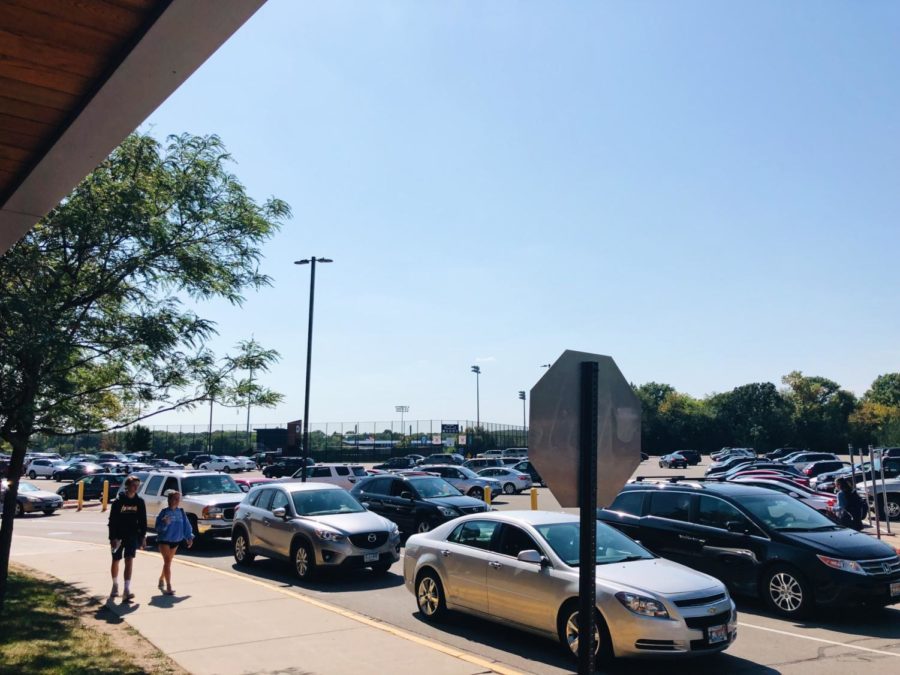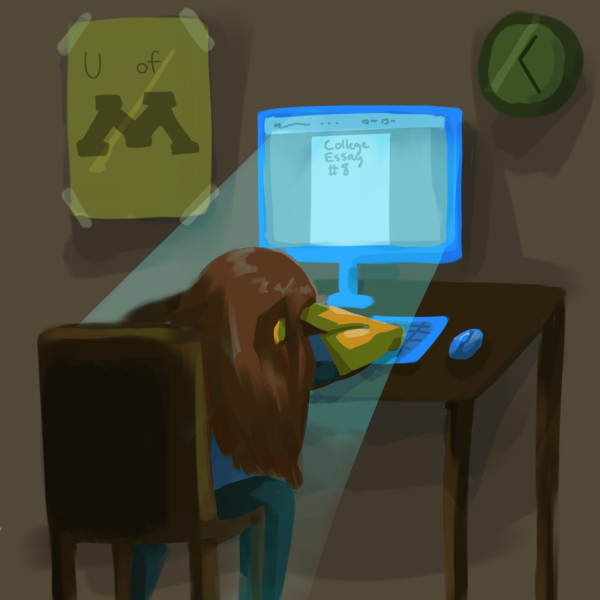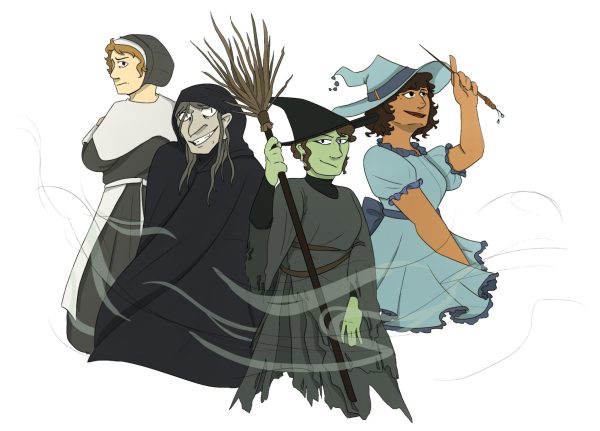Accelerating Parking Problems and Transportation Issues at Minnetonka
September 28, 2018
Minnetonka High School has the reputation of being a big school with many possibilities for students in academics, athletics and art. The one thing MHS lacks is space. Locked between Highway 7 and residential neighborhoods, the high school has used up all of the available on-site land. While classrooms have been rebuilt to accommodate growing grade sizes and VANTAGE is off site, the one thing that remains drastically affected by lack of space is parking and transportation.
Transportation has always been a problem for the high school. Upperclassmen wait with tingling anticiaption at the end of the summer to receive an email accepting their request for a parking pass and parents struggle each morning to get their kid to school before the bell sounds at 8:00 am. Each mode of transportation has its own problems, but to find the method that fits best, one should know their options:
First Student buses are offered to any student who applies online and are a cheaper option depending on location. While the bus can be convenient for students without any other ride to and from school, it does consume a large amount of time in the morning and afternoon. For Rachel Thompson, ‘22, it takes at least 20 minutes to get to school on the bus, and the bus can also become extremely crowded.
“There are a lot more kids than in middle school, people end up sitting at least two to a seat,” Thompson mentions. The bus system is a necessary part of transportation at the high school and provides a cheap means for mainly underclassmen to get to school.
Parent drop-off and pick-up is extremely helpful for anyone out of district; for them, it is the only way to get to and from school. It can also be used by in-district students that simply don’t have any other ride. However, this method of transportation is the biggest reason for traffic in the morning and afternoon.
Hattie Pettit, ‘20, who has friends drop her off, says “we have to leave by 7:00 in order to get here by 7:20. It depends on when we leave; it is a five- minute drive but if we leave after 7:10 we could be waiting for 30 minutes.”
As a solution, there is even an opportunity for students to take a shuttle from MMW to the High School and back again in the afternoon.
“I want to get that going so bad… we just can’t get enough people interested” said Josh Stephan, the Dean of Students at the high school.
This service would effectively decrease traffic at the high school if used by many students, but there has not been an adequate number of students interested so far.
The most popular means of transportation is driving oneself to and from school. Driving to school allows students to pursue extracurriculars and follow their own schedule for when they need to leave or arrive at MHS. This is something that helps students to engage in many activities, something that Minnetonka takes pride in.
Administration uses the pool system to determine who will get a pass, which are only available to upperclassmen. The pool process was developed “about four years ago by staff and the goal of that was to create a fair system where students regardless of enrollment were able to be on a level playing field for parking permits,” said Stephan.
The MHS parking lot faces many problems itself, including safety concerns and space issues. The lack of adequete parking spaces, entrances, and exits to the parking lot is in particular concerning for students. Not only is there not enough space for all students, causing a limited amount of parking passes, but the small capacity of the parking lot is the main reason for the traffic congestion in the mornings and after school, which leads to speeding drivers and accidents.
Jorrun Kuehn , ‘20, mentions how “it’s really hard to get out of the parking lot, it’s always really crowded,” while Connie Liker and Kayla Wald, ‘19, joke that their parking experience has been good simply because they “wait until after three to leave.”
The common theme throughout seems to be frustration towards these massive traffic issues directly before and after school. While inevitably there will be traffic during the periods in which most students are trying to enter and leave the school, the lack of space in the parking lot makes this issue much worse.
“Everybody’s goal is to still meet as many students needs as possible with the space that we have, but we can’t always [do that] but we really want to, and we really try” said Stephan.
Parking is limited and once the passes run out, there is nothing staff can do to make more passes.
Since there are only so many spots available, some students who don’t get a pass or pay the fee utilize the Frontage road next to Highway 7. While it’s free, students must get there early in the morning to ensure they get a spot.
“I had to get there before 7 each day or it was completely full,” said Onalee Erickson, ‘19. “If I didn’t get a parking spot [on Frontage] then I went and parked by Burger King across 101.”
Some students have the ability to walk or bike, obviously making it the most affordable option as long as you can manage the distance. Students who walk and park on Frontage must cross Delton Ave, the street that runs along 7 outside the high school. In years past, this proved to be a safety concern because rush hours and reckless driving made it difficult for students to cross safely. Yet this year the school has added a new crosswalk specifically designed for helping those students get to school safely.
The crosswalk idea came from “Student Innovation…a group of students who are really passionate about things that are happening here,” said Stephan.
The crosswalk on Delton Ave was a student-run project that really shows how students can get involved in tackling these large problems in the parking lot.
Mr. Stephan mentions how students “worked with the city to get [the crosswalk] built” and that “when kids reach out, there are a lot of people willing to listen, because a lot of times they have great ideas.”
With the ever growing population of students at Minnetonka High School, the parking lot and the issues that surround it become even more important. In terms of safety, the school had made progress but there is still work to be done in order to avoid traffic congestion, accidents, and careless driving.
The school needs all the ideas that it can get and, with the success of the Frontage crosswalk, the school is turning more to the students more often. And you don’t need to be a part of The Student Innovation Team to a have a say in the matter.
“I would be interested to hear from students… because we get great feedback,” said Mr. Stephan.
Students have been doing just that. The administration welcomes ideas from all students, and because students are at the core of the parking lot, there is something that each student at Minnetonka can contribute to solving this issue.






























